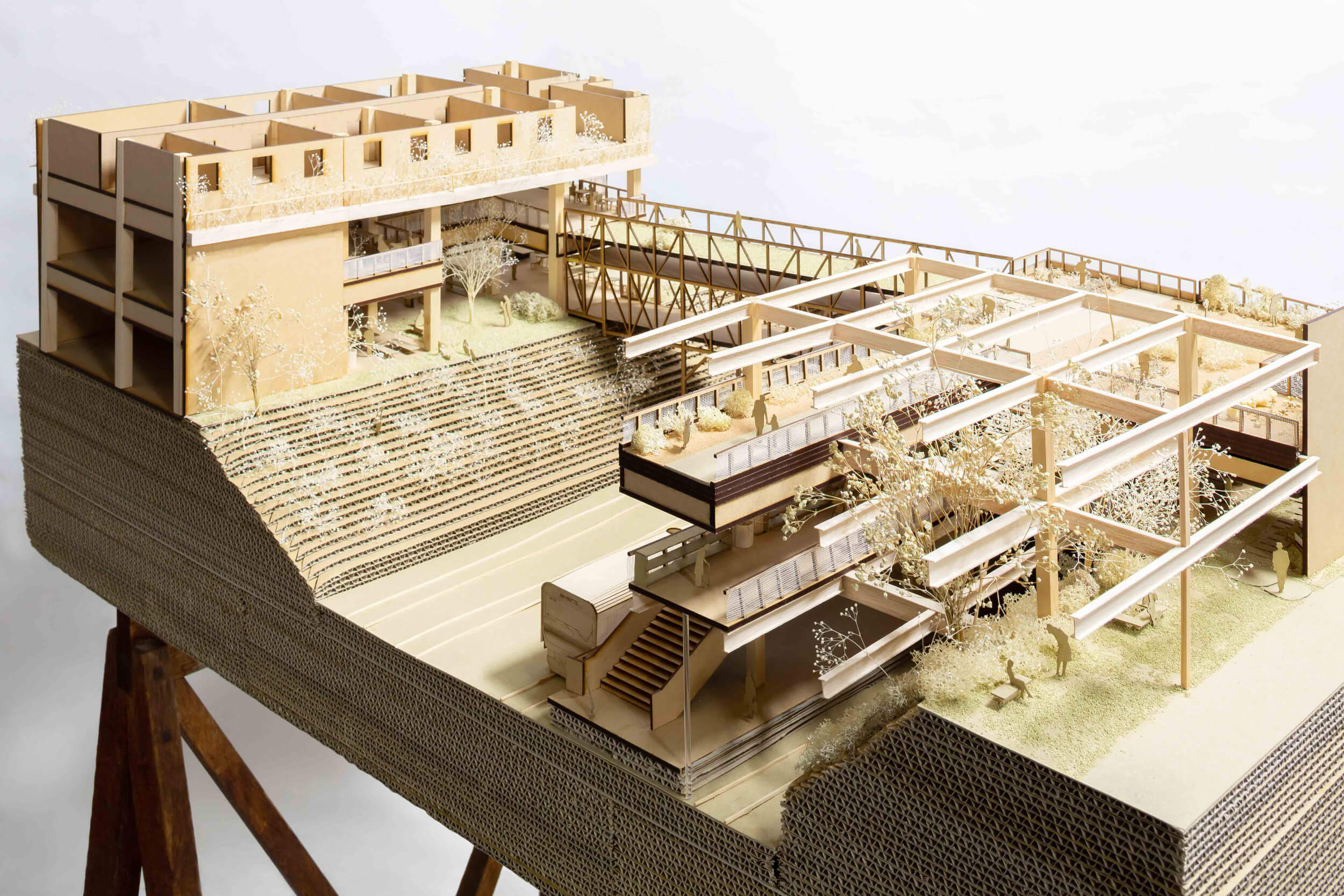Green spaces of the Rikugi Garden, Furukawa garden, Somei Yoshino memorial park and Somei cemetery are scattered around Komagome area, where the gardeners that took care of the huge gardens of samurai houses lived and the culture of gardens and gardening is still told today. The beautiful rows of azaleas planted by the local people that fill the slope on the side of the railroad are an expression of the local culture.Komagome station is composed of a station building in the north that is connected to a hotel in the south by a bridge. It is open towards the street and rotary and is adjacent to the walled Somei Yoshino Memorial Park. In the future where the ticket gate becomes touchless and gateless, and the space of the station changes in the future, while receiving the local cul- ture, if the station can be connected continuously with the surrounding green spaces, what kind of station would it be? The floor of the station office in the north side is removed to make a void. The rows of azaleas on the slope are extended beside the railroad until the bottom of the void, where trees are planted. The wall facing the Somei Yoshino Memorial Park is also removed in order to create an entrance that is connected with the park. Various kinds of trees and plants are displayed on the bridge that connects the hotel in south, which in turn is connected to the Rikugi Gar- den. An Edible Garden is installed on the rooftop, where the visitors can eat the vegetables made by local hands at the restaurant on the 2nd floor of the hotel. On the premise of an unmanned economy system, items in bookshops or bakery will be sold on a shelf distributed on the first floor. There are almost no partitions in the station, trees and plants jump out between the spaces. While leaving the ticket management and cashier to the technology, it is necessary to think about the role which focuses on nurturing the plants and crops in order to maintain a comfortable garden. This might encourage a new form of station staff that work in a station, which blends into the culture of local people
